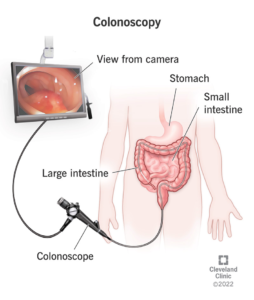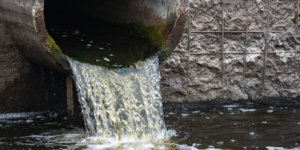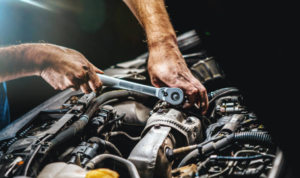Roofing is the top layer of a building that protects the interior from rain, snow, sunlight, and wind. It also provides insulation and enhances the structure’s aesthetic appeal.
Roofs can be made of many materials. There are 64 practical types of roofs, ranging from wood shingles and shakes to tile, concrete, metal panels, and so on.

The roof is an important part of any building because it protects the people inside from environmental elements like rain, snow, and sun. Its role as a protective barrier is not limited to the weather though; it also plays a key part in the architectural aesthetics of a structure and can help reduce heating and cooling costs by acting as an insulation layer.
In order to function properly, a roof must have a solid framework underneath it. This framework is called the roof structure, and it consists of rafters or trusses that are attached to each other. It also includes the ridge beam, which is a horizontal piece of wood resting at the peak of the roof.
These beams are usually made of wood or metal, and they form the main load-bearing structure of the roof. The king post sits in the centre of these rafters, and struts extend outwards from it to prevent them from collapsing. The lower ends of the rafters are then fastened to the wall plate, which transfers the load from the roof trusses to the walls. The ridge board then rests over the rafters to complete the roof truss.
Another part of the roof structure is the purlin, which runs parallel to the rafters and connects them with each other. It is then fastened to the ridge beam with cleats, which are hidden metal brackets. A ridge vent is often placed in the middle of the roof to provide proper ventilation.
Other structural parts of a roof include a valley, which is where two roof planes meet at an angle. A saddle, which sits behind a chimney or similar feature on the roof, helps divert water and prevent it from pooling. The eave, which is the lowest point of the roof, is where it meets the gutters.
Once the roof frame is in place, it’s time to add the sheathing, which acts as the base for the roofing material. The sheathing is typically a flat sheet of bare material, such as plywood or OSB (oriented strand board). At this stage, drainage features are also established, and the sheathing is then covered with a waterproof membrane to help prevent leaks.
The Roof Deck
When you think of a roof, your mind probably wanders to the asphalt shingles, natural clay tiles, or metal roofing materials that cover most residential and commercial roofs. However, the components that make up a roof extend far beyond its outer covering, and one of the most critical parts of any roof is its roof deck.
Roof decking, also known as roof sheathing, provides the sturdy support system that shingles and other roofing materials attach to. It is often composed of plywood, oriented strand board (OSB roof sheathing), or wood planks. It connects between the rafters or trusses of a roof structure, acting as an intermediary layer to help withstand and distribute weight and buffer against external loads like snow or wind.
Aside from its structural functions, roof decking can also provide a layer of insulation to protect the structure and prevent the loss of heat or cold from outside. Additionally, it can help protect against leaks by directing water away from areas like walls, chimneys, or valleys.
To prevent warping, bending, and other structural problems, it is important to stagger the joints of each board. Also, a moisture retarder should be used to keep the roof deck dry.
Lastly, roof flashing is installed around the edges of a roof to help direct water, snow, and other weather away from the decking and into gutters or downspouts. The roof flashing can be made of copper, aluminum, steel, or other metals, and it is a vital component in any roofing system.
While a properly constructed roof will provide many benefits, it’s important to have an experienced contractor install and repair your roofing system. This will ensure your roof is safe and secure, and that you’re getting the most value out of your home or business.
When deciding on a roofing company, always choose an insured, licensed, and certified contractor who can handle any roof project. They will be familiar with the local building codes and regulations, and they’ll follow strict safety guidelines to avoid falls or other hazards. Also, they’ll have access to the necessary equipment for working on rooftops, such as ladders, hard hats, harnesses, and more.
The Underlayment
When it comes to roofing, the underlayment is one of the most important elements that contributes to the longevity and performance of your roof. It acts as a first line of defense against leaks, providing a smooth surface for shingles to adhere to and sealing around flashing. Additionally, it helps provide a layer of insulation to keep your home cooler and quieter.
There are three primary types of roof underlayment: felt, synthetic, and rubberized asphalt. Felt is a traditional option made from an organic paper or mat that has been saturated with asphalt. This solution is typically available in 15-pound or 30-pound thicknesses and referred to as “tar paper.” However, because it is not waterproof, felt underlayment is susceptible to water damage and should not be used in high-wind areas.
Alternatively, synthetic underlayment is a more durable alternative that is resistant to moisture and other harsh weather conditions. These solutions are typically a bit more expensive than the felt options, but they can offer better protection and withstand the effects of harsh weather conditions, making them a smart investment.
Rubberized asphalt underlayment is another roofing underlayment option that is made from a combination of asphalt and rubber polymers. This solution is best for cedar shake roofs because it can withstand high-humidity environments.
Regardless of the type of underlayment you choose, it is vital to ensure your roofing project adheres to local building codes. This will prevent issues during inspection and ensure that your roofing system functions as intended.
While the underlayment is not as glamorous as a new roof, it is one of the most crucial components to a functional and long-lasting roofing system. Choosing the right underlayment will help you protect your home against leaks, mold, mildew, and other costly damage.
In addition to protecting against unwanted water incursion, the underlayment also mitigates noise pollution, transforming your home into a tranquil haven for relaxing evenings or productive work sessions. Underlayment provides a layer of insulation and absorbs vibrations from footfalls to muffle sound transmission between rooms and levels in your home.
The Roofing Material
A roof is one of the most crucial parts of a building, insulating and protecting its interior from rain and other elements. It is also important for preserving the structure and safety of the house.
Choosing a roofing material is an important decision that affects the appearance, durability, and overall cost of the roof. The most common roofing materials are shingles, tiles, and metal. Each type of material offers its own unique advantages and disadvantages.
For flat or low-sloped roofs, single-membrane systems like EPDM, TPO, and PVC are popular. They are easy to install and offer a great balance of waterproofing, energy efficiency, and durability. Many also feature a reflective surface that can help reduce cooling costs in hot climates.
Metal roofs are made of either steel or aluminum, and they come in a variety of colors and finishes. They are durable and fire-resistant, and some types of metal roofs can even withstand hurricane-force winds. However, metal is expensive and requires regular maintenance to prevent rust and corrosion.
Tile roofs, which were popular in Europe during the medieval period, are an attractive option that gives homes and buildings a classic look. They are highly durable and can last for centuries, but they’re heavy and require specialized installation techniques.
A less costly alternative to tile is synthetic or rubber roofing. It’s often used as an underlayment for other roofs or in places where a more durable material isn’t required. Synthetic underlayments have been particularly helpful in post-Katrina New Orleans, where they held up better than FEMA’s plastic tarps and became part of the roofs as they were repaired.
Wood shakes and shingles are another affordable and versatile roofing option that can provide a rustic or contemporary aesthetic. They are durable and offer good insulation, but they do require regular maintenance. Other more luxurious options include slate, which is available in a variety of shapes and colors and can last for hundreds of years but is very expensive.
A roof’s ventilation system is an important component to consider as well. Its goal is to balance the amount of air coming in and going out to prevent overheating and moisture build-up that can lead to ice damming.





